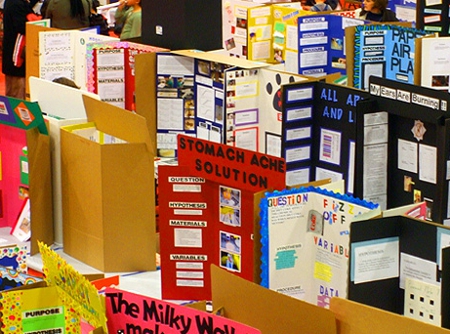Science Fair Participation Slips

Hi-ho! Who’s coming to the fair?
As science fair season kicks into high gear, participation among high school students appears to be declining, according to the New York Times. And many science teachers say the problem is not a lack of celebration, but the Obama administration’s own education policy, which holds schools accountable for math and reading scores at the expense of the kind of creative, independent exploration that science fair projects require.
“To say that we need engineers and ‘this is our Sputnik moment’ is meaningless if we have no time to teach students how to do science,” said Dean Gilbert, the president of the Los Angeles County Science Fair, referring to a line in President Obama’s State of the Union address. The Los Angeles fair, though still one of the nation’s largest, now has 185 schools participating, down from 244 a decade ago.
In many schools, science fairs depend on teachers who shoulder the extra work. They supervise participants and research, raise the money for medals and poster boards, and find judges — all on their own time.
Some high schools funnel their best students into elite science competitions that require years of work and lengthy research papers: a few thousand students enter such contests each year. But what has been lost, proponents of local science fairs say, is the potential to expose a much broader swath of American teenagers to the scientific process: to test an idea, evaluate evidence, ask a question about how the world works and discover how difficult it can be to find an answer.
Filed under: K-12 Education News
Tags: Education Policy, Public Policy, Science and Engineering Fair, Science Fair, Science Fair Projects








